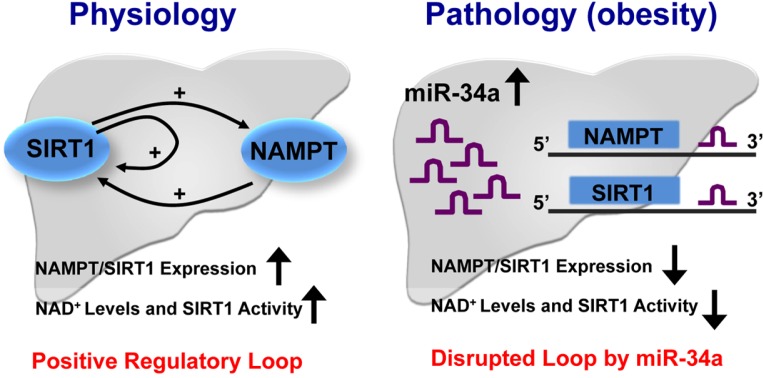Fig. 3.
Model of the SIRT1/NAMPT regulatory loop and its inhibition by miR-34a in disease. In the fed state, NAD+ levels and SIRT1 activity are low. During energy-deprived conditions like fasting, NAD+ levels are high resulting in increased SIRT1 activity. SIRT1 is recruited to the Nampt and Sirt1 genes, resulting in epigenomic activation of these genes. Induced NAMPT, in turn, increases cellular NAD+ levels and SIRT1 deacetylase activity, thus completing a positive regulatory loop. The increased SIRT1 activity results in beneficial outcomes, such as increased lipid oxidation and reduced lipogenesis and inflammation (left panel). In fatty liver in obesity, however, miR-34a is elevated in both the fasting and fed states and inhibits both NAMPT and SIRT1 expression by binding to the 3′ UTRs of these mRNAs, which effectively disrupts the positive regulatory loop. The decreased SIRT1 expression and activity results in detrimental metabolic outcomes (right panel).

